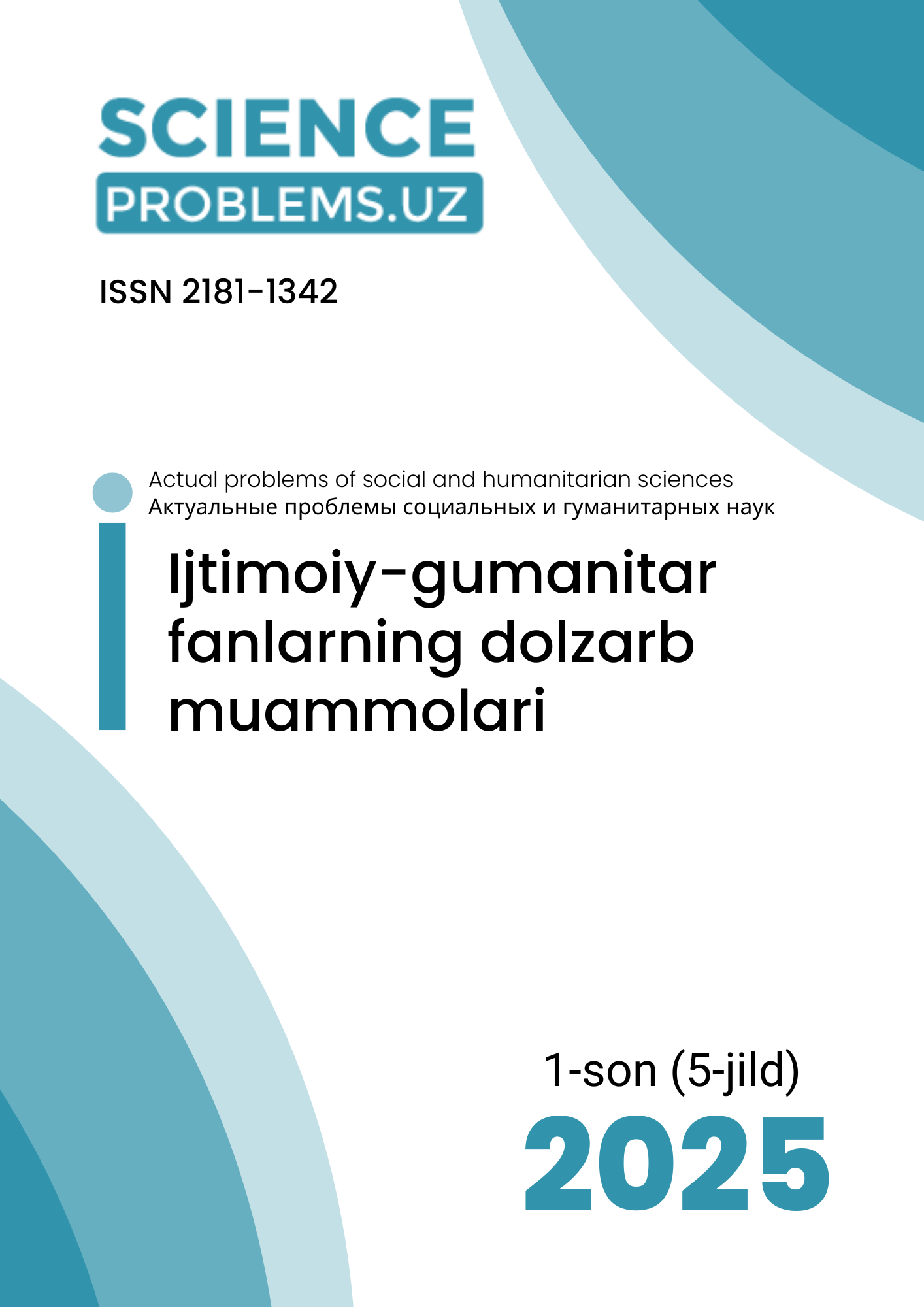"ИСЛАМСКИЕ МИКРОФИНАНСЫ В УЗБЕКИСТАНЕ: СПРАВЕДЛИВЫЙ ПУТЬ К СТАБИЛЬНОСТИ И ПРОЦВЕТАНИЮ"
DOI:
https://doi.org/10.47390/SPR1342V5I1Y2025N18.1Ключевые слова:
: исламские микрофинансы, уровень бедности, закат, вакф, садакаАннотация
В данной статье рассматривается важность новых подходов в борьбе с бедностью и их эмпирическое значение. Исследование сравнивает современные финансовые системы с исламскими микрофинансовыми системами и предоставляет рекомендации. Также предложена модель, основанная на партнерстве (вместо займов с процентами), с акцентом на малообеспеченное население и ключевых субъектов предпринимательства.
Библиографические ссылки
1. Adnan, M.A., & Ajija, S.R. (2015). The effectiveness of baitul maal wattamwil in reducing
poverty: The case of Indonesian Islamic microfinance institution. Humanomics 31(2),160-
82.
2. Akbar,T. Siti-Nabiha, A.K. (2022). Objectives and measures of performance of Islamic
microfinance banks in Indonesia: The stakeholders’ perspectives. ISRA International
Journal of Islamic Finance, 14(2), 124-140.
3. Alaro, A. A., & Alalubosa, A.H. (2019). Potential of Sharı’ah compliant microfinance in
alleviating poverty in Nigeria. Int. J. Islam. Middle E Finance Manag. 12(1), 115–129.
4. Ali, A.E.E.S. (2017). The challenges facing poverty alleviation and financial inclusion in
North-East Kenya Province (NEKP). Int. J. Soc. Econ. 44 (12), 2208–2223.
5. Arshad, N.C., & Ismail, A.G (2010). Shariah parameters for musharakah contract: A
comment. International Journal of Business and Social Science, 1(1), 145-162.
6. Babu, D.R. Naratejaswini & Umakanth, J (2019). The role of microfinance in India. 14th
International Conference on Science, Technology and Management, organized by Guru
Gobind Singh Polytechnic, Nashik, Maharashtra, India.
7. Balqis, N. et al. (2023). Title: An Integrated Model of Islamic Social Finance Towards
Sustainable Funding. Available from https://www.bankrakyat.com.my/uploads/contentdownloads/
file_20240715161119.pdf [Accessed 12 December 2024].
8. Demirguc-Kunt, A. Beck, T. & Honohan, P. (2008). Finance for all: Policies and pitfalls in
expending (policy research report). Washington Dc: World Bank.
9. Dusuki, A.W. (2008). Understanding the objectives of Islamic banking: a survey of
stakeholders’ perspectives. International Journal of Islamic and Middle Eastern Finance
and Management, 1(2), 132-148.
10. El-Komi, M. & Croson, R. (2013). Experiments in Islamic microfinance. Journal of
Economic Behavior & Organization, 95, 252–269.
11. Hassan, M. K., Alshater, M. M., Hasan, R. & Bhuiyan, A. (2021). Islamic microfinance: A
bibliometric review. Global Finance Journal, 49, 1-14.
12. Ijaiya, M.A., Jimoh,A.T. Attah, J.A, Abdulmumin, B.A, & Nafiu, A.I. (2021). Murabaha-related
credit risk and financial performance of Islamic banks in Africa. International Journal of
Islamic Banking and Finance Research, 5(1),60-69.
13. Jimoh, A.T., Attah, J.A. & Abdul, F.A (2021). Financial performance of Islamic banking in
Nigeria: A camel analysis of Jaiz bank Plc. International Journal of Shari’ah and Corporate
Governance Research, 4(1), 1-15.
14. Maulana, H., Abdul Razak, D., Adeyemi, A. A. (2018). Factors influencing behaviour to
participate in Islamic microfinance. International Journal of Islamic and Middle Eastern
Finance and Management, https://doi.org/10.1108/IMEFM-05-2017-0134
15. Rohman, P. S., Fianto, B.A., Shah, S. A. A., Kayani, N. S. & Supriani, I. (2021). A review on
literature of Islamic microfinance from 2010-2020: Lesson for practitioners and
directions. Heliyon, 7, 1-11.
16. Sadr, S.K. (2015). Qarḍ ḥasan financing in islamic banks. ISRA International Journal of
Islamic Finance, 6(2), 1-14.
17. Shaikh, S.A. (2017). Poverty alleviation through financing microenterprises with equity
finance. J. Islam. Account. Business Res. 8 (1), 87–99.
18. Shinkafi, A.A., Yahaya, S., & Sani, T.A. (2019). Realising financial inclusion in Islamic
finance. J. Islam. Market. 11 (1), 143–160.
19. Tursunov, A. (2023). Economic Essentials of Islamic Microfinance and Importance in
Poverty Reduction. Google.com. Available from
https://scholar.google.com/citations?view_op=view_citation&hl=en&user=QM-
9wKoAAAAJ&citation_for_view=QM-9wKoAAAAJ:W7OEmFMy1HYC [Accessed 12
December 2024].
20. Usman, A.S, & Tasmin, R. (2016). The Role of Islamic Micro-finance in Enhancing Human
Development in Muslim Countries. Journal of Islamic Finance, 5(1),53–62.
21. Widiarto, I., & Emrouznejad, A. (2015). Social and financial efficiency of Islamic
microfinance institutions: A data envelopment analysis application. Socio-Economic
Planning Sciences, 50, 1–17. https://doi.org/10.1016/j.seps.2014.12.001.
22. World Bank. (2024). Poverty, Prosperity, and Planet Report 2024. World Bank. Available
from https://www.worldbank.org/en/publication/poverty-prosperity-and-planet.








